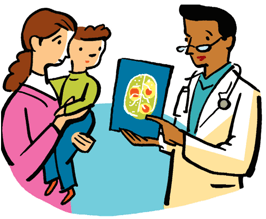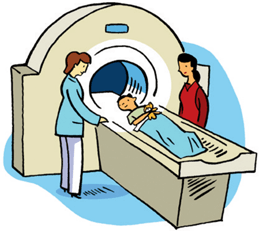Positron (POZ-it-tron) emission (e-MISS-shun) tomography (toe-MOG-ruff-ee)–also called a PET scan–is a safe test that gives doctors special pictures of the human body. Other similar tests, such MRI and CT scans, take detailed pictures of the body as well, including the brain. A PET scan takes pictures of chemical and other changes in the brain that MRI and CT scans cannot show. These detailed pictures of the brain’s activity that PET scans provide help doctors diagnose a problem, choose the best treatment and see how well the treatment is working.
This test involves a computer-based PET scanner and a special liquid known as a radiopharmaceutical (RAY-dee-oh-far-ma-SOO-tick-ool). The liquid has very small amounts of radioactive molecules in it but is completely safe and will not hurt your child. The liquid is given through a shot. Once it reaches the part of the body that is being tested, it sends signals that can be read by the PET scanner and made into the pictures that the doctors will look at.










